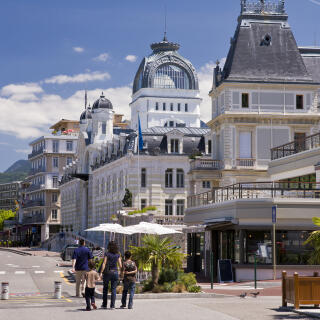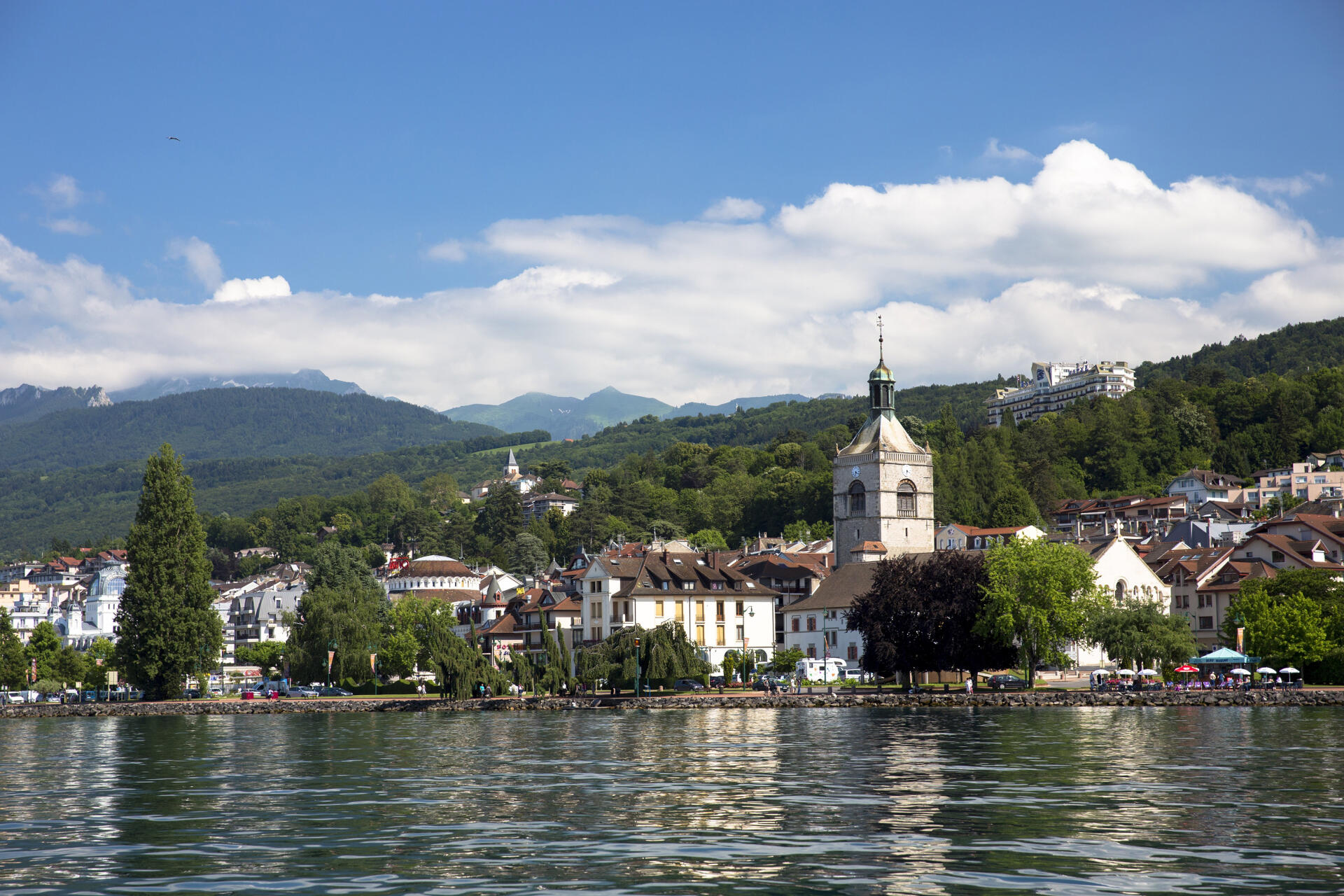


Travel: Evian reconnects with its Belle Epoque past
FeatureThe city on the shores of Lake Geneva is restoring its Art Nouveau heritage that bore witness to the golden age of thermalism. The casino, palaces and 1913 funicular offer a glimpse into the era's opulence and exquisite refinement.
Finding time again. Since Marcel Proust liked to stay here in his "great desire to see the beautiful lake" of Geneva again, the title of his novel could be the slogan for the coming months in Evian-les-Bains. The town, which is being reunited with its Belle Epoque past, will soon unveil two of its treasures: the casino and, later on, the snack bar Cachat, two reminders of the golden age of thermal cures when, at the turn of the 20th century, members of royal families and persons of means came here for a summer season of socializing. Sometimes forgotten, this Art Nouveau heritage is now back in favor: "Until the 1990s, it was considered minor, too kitsch. Only in the 2000s did people realized its value," pointed out Françoise Breuillaud-Sottas, the passionate historian recounting Evian's heyday.
A few steps from the church, facing the lake, a Saint Sophie silhouette is crowned by a Byzantine basilica dome. Since 1911, it has housed the casino, whose elegance will be restored in June when its renovation is completed. The red neon sign, with its poor man's Las Vegas look, has been replaced by white letters set into the glass roof, below which an all-glass façade now ripples.
The interior has been freed of the decoration that used to hide the dome and stained glass windows. And the friezes painted by Gustave Louis Jaulmes (1873-1959) have recovered the gold leaves outlining the intersecting arches and making the space feel grander. "An architecture of sensation, deep and soothing, powerful without being oppressive," praised Philippe Prost, the architect who, at the request of the owner, the Danone group, restored its luster to the creation of Jean-Albert Hébrard (1866-1942), who is behind several Art Nouveau treasures in the spa town.

Prost will later refurbish the small 1885 theater, which is connected by a gallery to the casino. Behind its neoclassical staircase and pilasters, the ceiling of the Italian-style hall bears the names of the nations (Russia, Italy, England, Switzerland) from which the foreign customers came. Most took the train that Alfred André – the president of the Company of the Mineral Waters of Evian, who was also a director of the PLM (Paris-Lyon-Méditerranée) railway company – had brought all the way from the capital.
Palace of eclecticism
One can imagine how elegant the lakefront was before it was obstructed by a recent building between the theater and the imposing villa of Antoine Lumière, father of Auguste and Louis and zealous marketer of their photographic and then cinematographic inventions. A year after the Lumière brothers' first film was shot in Lyon (1895), he bought this classic residence, altering the plans to turn it into a palace of eclecticism: With a replica of Michelangelo's The Thinker on the vast terrace overlooking Lake Geneva, a copy of two Atlas sculptures by Pierre Puget (17th century) framing the front door plated with bronze bas-reliefs, a majestic interior staircase at the foot of which stretches the sculpture of a lioness, onyx fireplace and tables, stained-glass windows and frescoes, all can appreciate this rococo opulence as it now houses the town hall. While Antoine Lumière painted his landscape frescoes, his sons immortalized boats on the lake and the ladies in long dresses boarding them.
You have 59.32% of this article left to read. The rest is for subscribers only.
